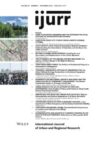Deviant behaviour is one of the most precise barometers of the social, economic, political and moral climate in a society. In this article the author analyses different forms of deviant behaviour in St Petersburg including violent crime, property crime, suicide and drug and alcohol addiction. Two stages in the dynamics of social deviation are identified during the transition period from ‘socialist totalitarianism’ to democracy. The first stage — from mid‐1985 to the end of 1987 — can be characterized by the spiritual and psychological elevation of the population, a sense of liberation and release and the expectation of improvement in standards of living. During this period the level of the main forms of deviant behaviour receded. The second stage begins with the deceleration of economic and political reforms in Russia. This process has been accompanied by an impoverishment in the level and the quality of life and in the basic components of socio‐demographic development and, as a result, by increasing levels of deviant behaviour. The advent of a third stage of economic, social and political stability is difficult to forecast. Our analysis of the official statistics and interviews with the people of St Petersburg leads to the following observation: the absolute and relative quantitative components of the basic forms of deviant behaviour have risen intensely and are near to critical. In addition, organized criminality has reached the level of criminal communities which control not only the great number of criminal organizations and groups but also the economic structures. On the one side, a process of criminalization of business is taking place, on the other, the politicization of organized criminality. In the author’s opinion, this tendency of the social, political and economic processes militates against any optimistic prognosis for the immediate future.
Details
Written by:
Yakov Gilinskiy
Digital Object Identifier (DOI)
10.1111/1468-2427.00090
About DOI
Read full article as PDF
Read full article as HTML
See the references for this article
